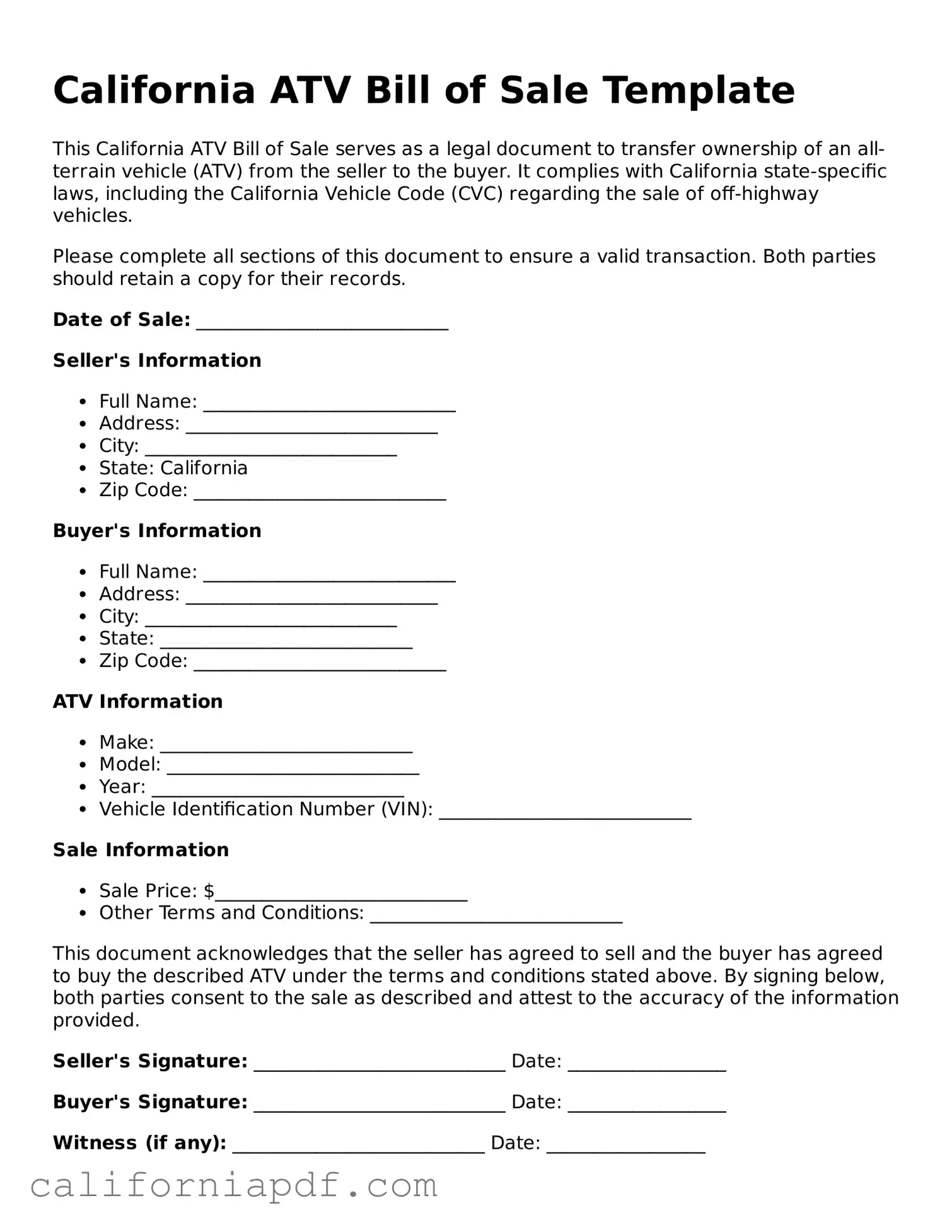The California Motorcycle Bill of Sale shares similarities with the ATV Bill of Sale form, as both serve as legal documents to record the transaction of a vehicle - in this case, a motorcycle instead of an all-terrain vehicle. Both documents typically require the same sort of information, like the make, model, year, and vehicle identification number (VIN), as well as the details about the seller and the buyer. These forms also serve to protect both parties by documenting the sale's terms, ensuring that the title transfer is conducted legally.
Another document resembling the ATV Bill of Sale is the Boat Bill of Sale form. Like its counterpart, this form is crucial for documenting the sale and transfer of ownership of a boat. It captures similar details: the names and addresses of both the seller and the buyer, a description of the boat, and the sale price. Both documents are essential for registration purposes, with the Boat Bill of Sale needed to register a boat, much like how the ATV Bill of Sale is needed to register an ATV in many states.
The Car Bill of Sale is also akin to the ATV Bill of Sale. It functions as a written agreement for the sale of an automobile, detailing the transaction between the buyer and the seller. Similar data is captured in both forms, such as the vehicle's description, the agreed-upon price, and the parties' information. These documents play a critical role in the vehicle registration process and offer legal protection by recording the change of ownership.
Similar to the ATV Bill of Sale is the Trailer Bill of Sale document. This form is used specifically for the sale of a trailer and includes details like the make, model, year, and VIN of the trailer, closely mirroring the structure of the ATV Bill of Sale. Both forms act as a proof of purchase and are necessary for the registration of the vehicle with the local authorities, ensuring the legal transfer of ownership.
The Personal Property Bill of Sale is another document that bears resemblance to the ATV Bill of Sale, though it encompasses a broader range of personal property beyond vehicles. This document serves to record the sale of any item of value, including but not limited to vehicles. Despite this broader scope, the structure of the form closely follows that of the ATV Bill of Sale, collecting information about the seller, the buyer, and the specifics of the item sold, alongside the sale price and date.
Lastly, the Firearm Bill of Sale is quite similar to the ATV Bill of Sale in that it documents the sale and transfer of a specific type of property - in this case, a firearm. Both forms require detailed descriptions of the item being sold, including serial numbers for firearms or VINs for ATVs. They also include the personal details of both the seller and the buyer, the sale date, and the price. These documents not only serve as a receipt but also ensure that the transfer complies with state regulations and laws.
